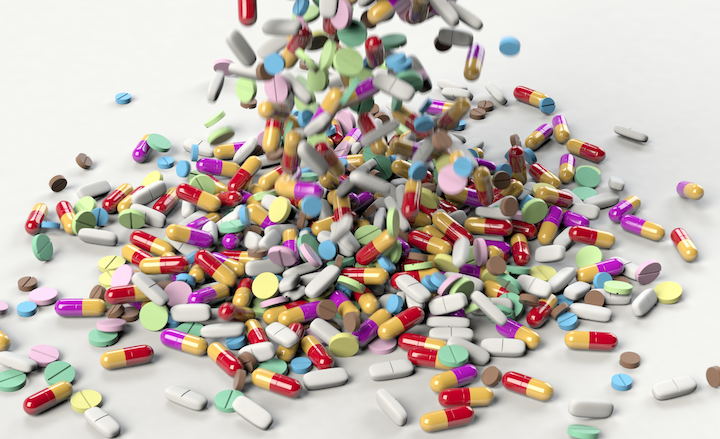How do bacteria develop antibiotic resistance (ABR)? What are its consequences to human health and economy? What are the factors that contribute to the rise in ABR? Have any steps been taken to combat this global crisis? How do we promote awareness amongst people? In this article, Mousumi Saha addresses these questions.

Infectious diseases are one of the leading causes of death worldwide. Of these, bacterial infections form a major category. The serendipitous discovery of penicillin, and the subsequent advancements in research and development of antibiotic drugs proved to be a remarkable remedy for bacterial infections. But the abuse of antibiotics over the years has led to the emergence of antibiotic resistance (ABR). Some predominant examples of antibiotic-resistant bacteria include methicillin-resistant Staphylococcus aureus (MRSA), multi-drug resistant Mycobacterium tuberculosis (MDRTB) and vancomycin-resistant Enterococci (VRE), among others.
Antibiotic resistance: a global problem
Major international and national health agencies, including the World Health Organization (WHO), the Centers for Disease Control and Prevention(CDC) and the Indian Council of Medical Research (ICMR), have warned against the dreadful effects of the rapidly-escalating threat of ABR to global health and economy. According to the UN Ad hoc Interagency Coordinating Group (IACG) on Antimicrobial Resistance, at least seven lakh people die every year due to drug-resistant diseases. It is estimated that, by 2030, up to 24 million people would be thrust into extreme poverty due to antimicrobial resistance. ABR further weakens the languishing healthcare systems in developing countries. For example, without effective antibiotics, the duration of medical procedures like organ transplantation, chemotherapy and surgeries are extended.
Types of antibiotic resistance
Bacteria can be inherently resistant to certain antibiotics or acquire resistance through genetic mutations or gene transfer to survive antibiotics. Such acquired genetic changes could modify the composition of bacterial membranes to permit less or no antibiotics into the cell. Thus, the bacteria effectively resist antibiotics and survive treatment.
Alternatively, they could inactivate or degrade the antibiotics, or change the structure of their target (inside the cell) to which the antibiotic would bind and subsequently, destroy the bacteria. Two other forms of ABR include ‘cross-resistance’ – bacterial strains gaining resistance to a class of antibiotics that act using similar mechanisms, and ‘multi-drug resistance’ – the same bacteria resisting multiple drugs. Of these, it is most important to control acquired resistance where bacteria acquire changes that can help them survive in the presence of an antibiotic. Such changes include reduction in membrane permeability such that the bacteria take up lower amounts of antibiotic, synthesis of enzymes that can inactivate or degrade antibiotics, increase in the number of pumps to flush out the antibiotic, and structural alteration of the molecule that is targeted by the antibiotic to ultimately kill the bacteria.
Contributing factors
The main factors that contribute to the rise in ABR include excessive or deficient consumption of antibiotics, improper disposal of medical waste (like disinfectants and expired drugs), unhygienic sanitation systems, excessive use of antibiotics in animal husbandry, and international travel/migration. For instance, migrants or travellers may carry infectious diseases depending on the living conditions in their countries. Some of them, who have medical conditions, may be especially prone to infection by drug-resistant bacteria during their travel. The movement of patients from one country to another — for medical treatment — contributes to the risk of ABR increase in that country.
In line with Darwin’s theory of evolution, bacteria acquire ABR for survival as a part of the natural selection process. When several antibiotic drugs that are designed to kill or restrict the growth of a broad range of different bacteria are used for treatment, the few surviving bacteria develop resistance against all similar drugs. Such bacteria are called multi-drug resistant bacteria. These bacteria transfer their genetic material to others that are susceptible, thereby helping them gain resistance to the drugs and survive treatment. Thus, these different factors lead to the emergence of new bacterial strains that are resistant to antibiotics.
To interpret the onset of ABR, it is necessary to identify and understand the genes and proteins that confer bacteria with antibiotic resistance, their distribution and modes of action.
Fight against ABR
The ICMR, WHO and CDC have been taking measures to combat ABR. For instance, ICMR is actively involved in research and funding projects that develop new drugs. This includes initiatives and action plans undertaken by ICMR for the study and surveillance of antibiotic contamination and resistance. In 2015, WHO outlined a global action plan to handle antimicrobial resistance. The main aims were to spread awareness among people, and conduct research and surveillance programs. The WHO has established Working Groups for coordination, surveillance and research in regard to ABR in developing as well as developed countries. The Global Antimicrobial Resistance Surveillance System (GLASS), Global Antibiotic Research and Development Partnership (GARDP), and Interagency Coordination Group on Antimicrobial Resistance (IACG) are some of the groups working on this major global crisis.
Despite these measures, many people are not completely aware of ABR. Therefore, it is necessary to disseminate the relevant information to curb antibiotic resistance. Policymakers must have strict regulations in place to monitor the use of antibiotics. Scientists and clinicians must collaborate and approach the problem in a multi-disciplinary manner to eliminate this threat of multi-drug resistance. Further, personalized medicine and appropriate antibiotic therapy for patients can be new interventions. It is essential to conduct antibiotic resistance profiling of patients before prescribing antibiotics. This could be done using a combination of molecular techniques and well-maintained patient databases to identify the antibiotic-resistance genes present in the microbiome of a patient and prescribe drugs accordingly.
There is a serious need for medical practitioners to appropriately indicate the dose and mode of using drugs. A proper prescription combined with a change in public approach to antibiotic use would help in the fight against ABR. In summary, a multi-disciplinary approach is required to fight against ABR.